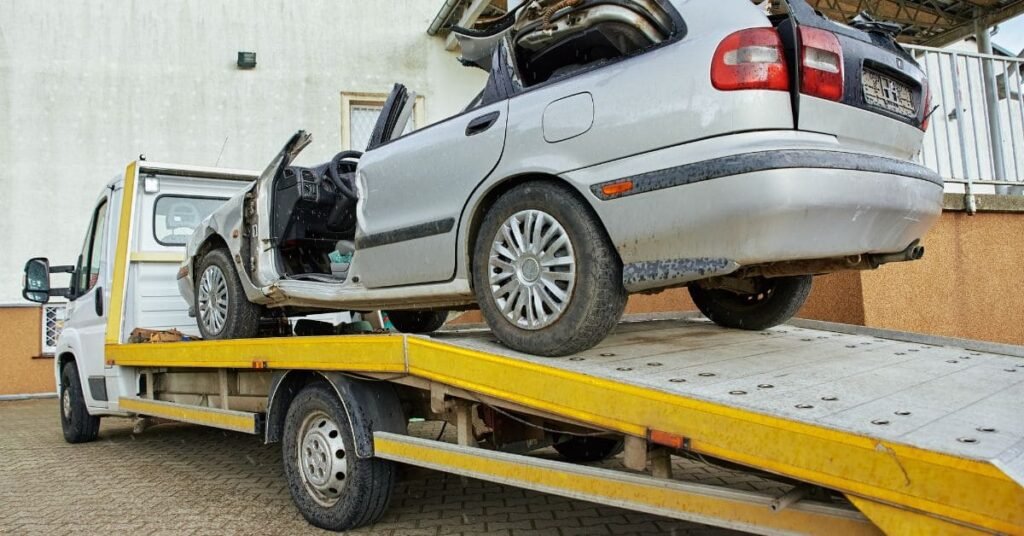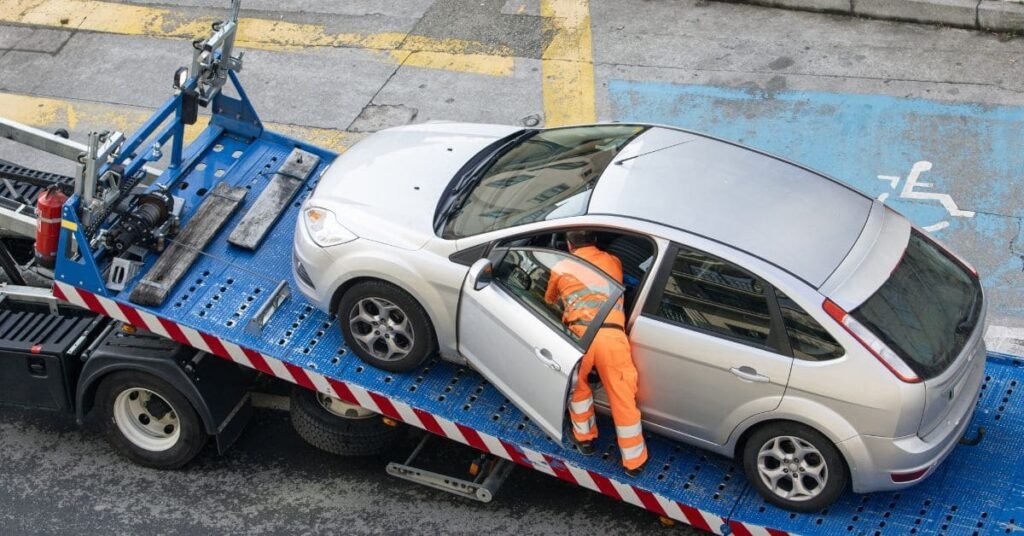Towing a car may seem intimidating, but for anyone who drives (especially those who live in areas where auto breakdowns and car accidents are common), it’s a necessary skill. Whether you’re dealing with a vehicle breakdown or need to move a car that is stuck in an inconvenient spot, knowing how to tow properly is essential for ensuring the safety of both the car and the people involved.
In this comprehensive guidebook, we’ll walk you through the process of how to tow a car in GTA safely, the tools needed, and best practices to prevent unnecessary damage or legal troubles.
Table of Contents
ToggleUnderstanding the Basics of Towing
Before we get into the specifics of how to tow a car, it’s important to understand the different types of towing and when each one is appropriate. Towing can be divided into two main categories: flatbed towing and wheeled towing.
Flatbed Towing
This is the safest and most common method of towing, especially for vehicles that cannot be driven or have significant mechanical issues. A flatbed tow truck uses hydraulic lifts to raise the entire vehicle off the ground, preventing any damage to wheels or the transmission and placing all weight onto its rear axle(s).
Wheeled Towing
This method involves lifting the front or rear wheels of the vehicle off the ground, yet leaving the others on the road. This is suitable for vehicles that are drivable or have only minor issues.
As this guidebook aims to teach how to tow a car using these two methods and avoid endangering the vehicle and people, let’s go on to learn more. And then the question naturally arises: what about liability?
Tools and Equipment Needed When Towing a Car
Many tools and types of equipment can help you tow a car safely. Depending on what you need, the following is just an example list of common items for towing.
Tow Straps
These are strong straps that can be used to attach a car to a tow vehicle. They are best used for towing a vehicle over short distances, such as moving a car from one parking space to another.
Tow Dolly
A tow dolly is a little two-wheel trailer which can bear the front wheels of a vehicle. It’s a cost-effective choice if you’re towing a car that is still in running condition but needs to be moved elsewhere.
Flatbed Tow Truck
A flatbed tow truck is the best way to take a car anywhere or dispose of it. It’s suitable for all types of vehicles, on-road or off-road, and it provides a safe way in which to transport them over long distances.
Wheel Lift Tow Truck
This type of tow truck uses a hydraulic lift to raise either the front or rear of the vehicle off the ground. It’s often used for towing vehicles that can be driven but need to be moved quickly. This is the best way of accomplishing that job.
Tow Bars
A tow bar is a metal bar that connects a towed vehicle to a towing vehicle. It is primarily used for towing vehicles that have four wheels on the ground, and is well-suited to long-distance towing.
Jump Cables and Battery Pack
If you are planning to tow a car with a dead battery, it may be useful to have some jumper cables or a portable battery pack on hand. This can help get the car started before you begin towing it.

A Practical, Step-by-Step Guide to Towing a Car!
After you have obtained all the tools and equipment you will need, it’s on to the next steps of towing a vehicle. Here are the general steps for towing a car, with either a tow truck or a tow dolly.
Step 1: The Condition of the Vehicle
Before you start towing a car, you need to check that the car is in a condition that makes it safe to tow. Towing a car in terrible condition with leaking fluids and/or broken wheels may simply make things worse. You should see what condition the vehicle is in and choose an appropriate towing method from that.
Step 2: The Best Method of Towing
So long as the vehicle is operational and you can drive it, using a tow bar or tow dolly is the best choice. If the car is a non-starter, or one with serious body damage or collapsed suspension, then use a flatbed tow truck to prevent further damage to your wheels and so on.
Step 3: Install the Towing Gear
Now that you have settled on the most appropriate towing method for your circumstances, you’re ready to install the towing gear. If using a tow truck with a wheel lift or flatbed, use chains or straps to secure the vehicle firmly. If using a tow dolly, ensure that the vehicle’s front wheels are firmly resting on the dolly before attaching the safety chains.
Step 4: The Towing Vehicle’s Capacity
Make sure that the vehicle you’re using to tow the car is capable of handling the weight of the car you’re towing. A small vehicle might not have the load-carrying ability to handle a large or heavy car. Always check the towing capacity of your vehicle first.
Step 5: Move off slowly
Move off slowly and gently. If the speed is too fast, it can let the car sway, especially if the vehicle is heavy. Provoke only road rage in others by giving others plenty of room for maneuver, but not too many lines, and keep an eye on trailers, which would be all funny set up against real cars anyway.
Step 6: Keep A Safe Distance And Abide By Towing Regulations
When towing a vehicle, always keep a safe distance from other vehicles so as to avoid sudden stops that might send your towed vehicle skydiving off the other side of the world. Think about road conditions: sharp curves or surfaces can exert a big negative effect on the stability of the towed car. You should always follow local laws and regulations relating to towing. These things differ from region to region.
Step 7: Secure The Load
When you have hooked up the towing equipment to the car, make sure all connections are solid before setting off. This means checking things like the tow straps and/or chains used to hold it down. A loose connection could cause a serious accident for both cars involved.
Step 8: Quick Stops
If you are driving a car over a long distance, be sure to stop at regular intervals to check your towing setup. You will need to make sure that the car being towed is still securely anchored and that there are no problems with any of the equipment involved. This will also give you the opportunity to check tire pressure and fluid levels in your towing car.
Step 9: Unloading
When you have reached your destination, it is time to remove the car. If you are using a flatbed tow truck, lower the bed carefully and drive or push the vehicle off. With two dollies or wheel lifts, make sure to lower the panel slowly and steadily so as not to snag under the lips of fenders and so on.
Common Towing Issues and Solutions
However, occasionally unforeseen difficulties can crop up when towing a vehicle. Below, we list some of the common issues that people have encountered and how to avoid them.
(1) Excessive Swaying
This happens when the towed vehicle isn’t securely fastened. Always check straps and chains are tight before you begin towing.
(2) Transmission Damage
If you are using the wrong method to tow a car (e.g., towing a front-wheel drive vehicle in neutral at high speed over rough terrain), then you could cause permanent harm to its gear system. Only use flatbed tow trucks or trailers for non-drivable vehicles.
(3) Brakes Overheating
Towing a heavy vehicle can often lead to overheating brakes. Do make sure that you keep a careful eye on the braking system of your towing car and regularly stop to cool down the brakes.
(4) Legal Compliance
Always make sure you comply with towing laws wherever you are, particularly on excellence rating, speed limits, and types of towing equipment allowed.
Conclusion
Towing a car need not be a difficult or stressful process. By following the correct measures, using the proper equipment, and understanding towing basics, you can be sure of a safe and efficient experience that achieves your goals. Whether it’s near or far from home, for a variety of reasons, you may need to tow a car in GTA someday and make sure to always keep yourself informed about best practices in towing. Likewise, if you’re ever not sure exactly how to tow a car safely, having a professional towing service do this can help guarantee that your car arrives where it’s supposed to without any problems.
Frequently Asked Questions
Q: What Is The Cost Of Towing?
A: The cost of having a car towed will vary depending on factors like distance covered, type of vehicle, and method used for towing. For short distances, expect to pay a low fee. However, long-distance towing or specialist tow services can be expensive. Always check with your local towing company to obtain an accurate estimate.
Q: Can I Tow A Car, Say, Across The Country Or Around A Large Area Where There Are No Garages?
A: Yes, by all means, it is possible to tow a car yourself, but drive it for short periods or at low speed in order not to damage the car. The important thing here is to have the right equipment, such as a tow dolly, tow truck, or flatbed. Alternatively, the vehicle can be moved to a safe location before calling roadside assistance or a towing company and taking it to the garage for repairs or another secure location.
If handled incorrectly, towing can cause damage to the vehicle being towed. For instance, pulling a vehicle with the wrong method could ruin its transmission or suspension. To avoid damage, always use the appropriate towing method for your vehicle type and condition.


 Call us at
Call us at  Email us at
Email us at 
